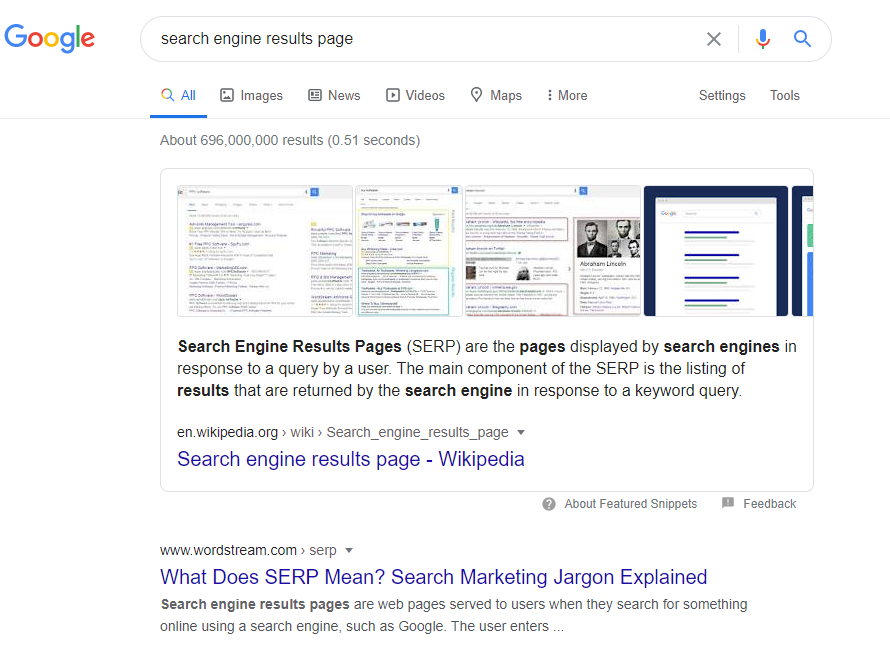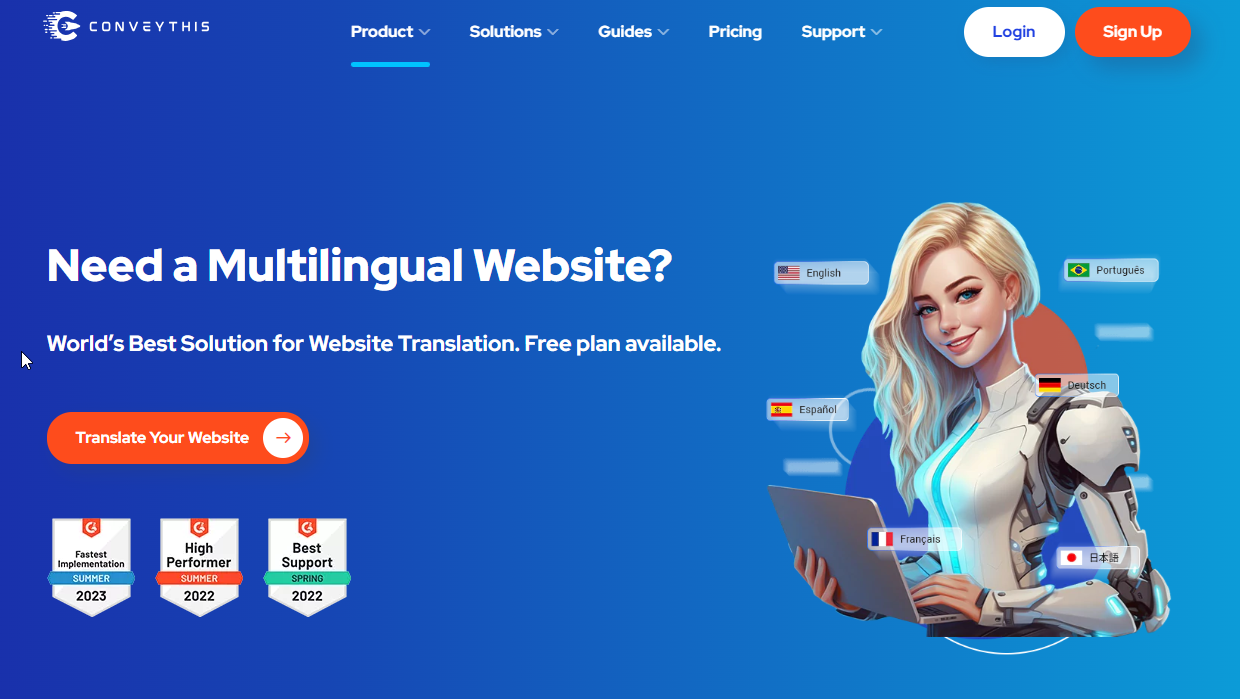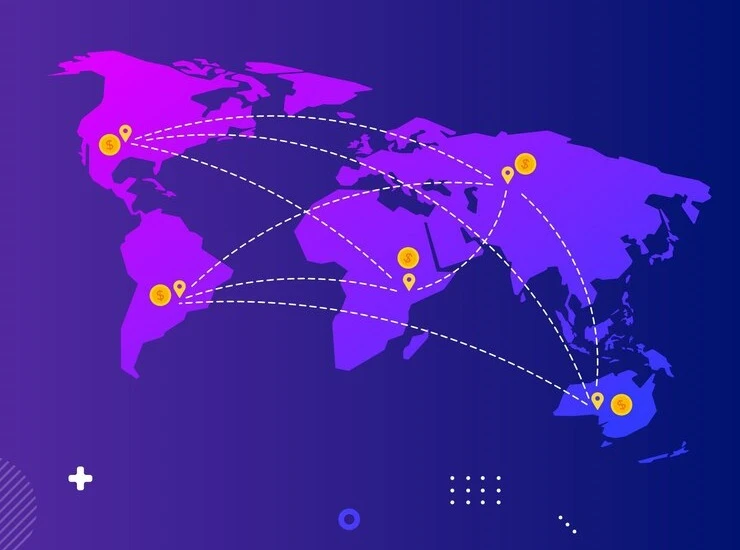SEO Tips for Multilingual Websites: Comprehensive Guide to Boost Your Global Reach
SEO Tips for Multilingual Websites: How to Optimize Your Content for Global Reach
In today’s interconnected world, technology plays a vital role in achieving marketing goals across different industries. Regardless of your business niche, reaching a broader audience and standing out among competitors has become increasingly reliant on digital presence. The key to this success is explaining your products or services clearly and efficiently, ensuring your target audience can discover you quickly and easily. With more businesses expanding from local markets to the global scene, the digital transformation has made it possible to reach new customers from all corners of the world.
Once you’ve set up a website for your business, it should contain all the essential information that both existing and potential customers need. But how do you ensure they find your website? This is where Search Engine Optimization (SEO) comes into play. A well-optimized, SEO-friendly website not only attracts more visitors but also improves the overall quality of traffic through search engine result pages (SERPs).

The quality of traffic refers to the visitors who are genuinely interested in what you offer, as opposed to random or irrelevant site visits. By focusing on SEO, your website can rank higher on search engines, making it easier for potential customers to discover you. Organic traffic, which is the unpaid traffic that comes from search engine results, can greatly improve the effectiveness of your marketing efforts.
One of the most impactful strategies for expanding your reach is creating a multilingual website. A multilingual SEO strategy can significantly enhance your site’s visibility and cater to global audiences who speak different languages. By implementing SEO techniques tailored to different languages and regions, you can better target international markets and effectively communicate your brand’s message across various cultural contexts.
What is SEO Multilingual Website Optimization?
SEO for multilingual websites goes beyond simply translating content into multiple languages. It involves a comprehensive strategy that optimizes your website’s content to cater to audiences from different countries, ensuring your site is easily discoverable and ranks well in various global markets. The goal of multilingual SEO is to enhance your site’s visibility in search engine result pages (SERPs) across different languages and regions, attracting a broader and more relevant audience.
While English is often considered a global language, it’s essential to recognize that even in English-speaking countries, such as the United States, a significant portion of the population may not be native English speakers. Many of these individuals prefer browsing websites in their native language, such as Spanish, French, or even Creole. In such cases, providing translated content can make your website more appealing and accessible to these users. However, translating content alone is just the beginning.
A true multilingual SEO strategy involves optimizing various elements of your website to ensure it performs well in local search engines. Different countries have unique search behaviors, and search engines in each region may prioritize different ranking factors. To maximize your global reach, it’s important to tailor your website to suit local search patterns, including language preferences, cultural nuances, and local search engine algorithms.
The Importance of Multilingual SEO
When you create a website aimed at reaching audiences from different linguistic backgrounds, the content itself must be localized. Localization refers to translating the language, but also adjusting the message to suit cultural and regional differences. This is essential because even though an audience may speak English, their search habits or preferences might vary. For instance, users in Mexico may prefer browsing in Spanish, even if they understand English. A multilingual SEO strategy ensures that your content is discoverable by these users in their language and increases the chances of them interacting with your website.
Google Translate is a useful tool, but it doesn’t fully capture the nuances of multilingual SEO. While it may help non-English speakers understand your content, it doesn’t optimize your website for search engines or improve your rankings in international search results. To improve your SEO rankings, you need to consider factors such as keywords in different languages, search behaviors in specific regions, and regional preferences for content.
Key SEO Tips For Multilingual Websites
When building a multilingual SEO strategy, several factors need to be considered beyond just translating your content. Once you’ve determined your target audience based on language preferences, it’s crucial to tailor your approach to various regional needs. Here are key SEO tips to ensure the success of your multilingual website:
- Social Media and SEO
Social media has a significant influence on SEO, especially in multilingual markets. While platforms like Facebook dominate in the U.S., other countries have their own preferred platforms (e.g., WeChat in China, VKontakte in Russia, or Line in Japan).

These platforms offer valuable opportunities for engagement, traffic generation, and gaining backlinks, all of which can improve your website’s SEO performance. When crafting your social media strategy for a multilingual audience, it’s essential to adapt your approach to the languages, cultural nuances, and platform preferences of your target audience. Tailoring your content for local platforms can enhance visibility and drive more relevant traffic to your website, helping to boost your search engine rankings.
- Building Backlinks in Multilingual Markets
Backlinks are a core component of any SEO strategy, and they’re particularly vital in multilingual markets. However, the process of building backlinks must be localized to each target country and language. The backlinks you earn should come from reputable sources within the specific region and language you’re targeting. This could involve getting featured in local news outlets, industry blogs, or business directories that cater to the language and culture of your audience. In addition, engaging with local influencers or businesses can help you build a strong network of backlinks, boosting your site’s credibility and SEO ranking in that specific region. Localized backlinks improve your website’s relevance and authority in the eyes of regional search engines, which can lead to higher rankings and better visibility in search results.
- Content Strategy
Content creation goes far beyond mere translation. To effectively engage multilingual audiences, you need to adapt your content to the cultural and regional preferences of your target markets. For example, in some countries, long-form, in-depth articles might be more popular, while in others, short, snackable content or highly visual media such as videos and infographics may attract more attention. It’s essential to conduct research into local content consumption habits, including preferred formats (e.g., blogs, videos, podcasts, etc.), tone, and subject matter. By understanding what resonates with your audience in each country, you can fine-tune your content strategy to meet their needs, improving engagement and SEO performance. Moreover, addressing local trends and incorporating region-specific examples, cultural references, or popular topics can make your content feel more authentic and relevant, further increasing its appeal.
- Analyze Google Statistics
Google Analytics is an invaluable tool for understanding your website’s performance in different regions. It provides detailed data about where your visitors are coming from, which languages they speak, and how they’re interacting with your content. This information is crucial for identifying which countries or regions are driving the most traffic to your site, and which languages are most effective in engaging your audience.

By regularly monitoring this data, you can identify patterns in your audience’s behavior and adjust your multilingual SEO strategy accordingly. For example, if a specific country or language is driving more traffic than expected, you can invest more resources into optimizing that region’s content and marketing efforts. Similarly, if certain regions or languages are underperforming, you can refine your strategy to better align with local search trends and preferences.
- Local SEO and Currency Considerations
For businesses with an online store, local SEO considerations go beyond translating product descriptions. You must ensure that your website is optimized for each target region’s currency, payment methods, and shipping options. This means displaying prices in the local currency and offering payment methods that are popular and trusted in the target country. Additionally, localizing your website for specific market needs—such as adjusting the product selection or offering region-specific promotions—can improve your SEO performance in those areas. By meeting the expectations of the local market, you increase the likelihood of conversion and repeat business, which can positively influence your search engine rankings.
- Choosing the Right Domain Name
Your domain name is one of the most important elements of your website’s brand identity and visibility. When targeting multiple languages, it’s essential to consider how your domain name will be perceived by speakers of your target languages. Ideally, your domain should be easy to pronounce, memorable, and culturally relevant to your audience. In some cases, translating your domain name or choosing one that works well across various languages might be beneficial. A domain name that resonates with your target market can improve brand recognition and make your website more accessible to users from different linguistic backgrounds. Additionally, domain names with local keywords or country-code top-level domains (ccTLDs) can signal to search engines that your website is specifically tailored for a particular region or language, helping you gain better visibility in local search results.
- Search Engine Result Pages (SERPs) in Different Languages
Search engine result pages (SERPs) can differ significantly from region to region, even for the same search queries. A search for the same keyword on Google in the U.S. might return different results than a search for that keyword on Google in Spain. This means that optimizing your multilingual website requires tailoring it for the specific versions of Google (or other search engines) used in different regions. You need to ensure that your content is properly localized for each region and that the right hreflang tags are used to direct users to the appropriate version of your site. By optimizing your website for regional search engines, you can increase the likelihood of appearing in local SERPs and drive more relevant, localized traffic to your site.
URL Structure for Multilingual Websites
When designing a multilingual website, one of the most crucial technical aspects to consider is your website’s URL structure. An effective URL structure not only organizes content by language but also ensures that search engines can correctly index and rank each version of your website. Proper URL management plays a pivotal role in boosting your website’s visibility across different regions and languages. Below are the most common URL structure options for multilingual websites, each with its own benefits and considerations:
1. Top-Level Domain (TLD)
A Top-Level Domain (TLD) refers to the last part of a domain name, such as .com, .org, or country-specific TLDs like .es for Spain or .fr for France. Using country-specific TLDs can signal to search engines that your website is targeted at users in a particular geographic region. This approach is particularly beneficial if you want to build a strong regional presence and enhance local SEO.
For example, if you’re targeting Spanish-speaking users in Spain, using yourdomain.es can indicate to both search engines and users that your content is tailored for that specific market. The benefit of using TLDs is that they can help you rank better in local search results, as search engines will recognize the country-specific extension and associate it with relevant regional queries.
However, managing multiple country-specific TLDs can be more complex and expensive, especially if you’re targeting multiple regions. It may also require separate hosting for each domain, increasing the maintenance effort.
2. Subdomain
A subdomain is a section of your website that is hosted under a primary domain but can have its own unique content. For multilingual websites, you can use subdomains to target different languages or regions by creating a subdomain for each language version of your site. For example, es.yourdomain.com could be the Spanish version of your website, while fr.yourdomain.com would be for French-speaking users.
Using subdomains allows you to keep your primary domain intact while creating distinct sections for each language or region. This structure also allows for easier management of each language version, as you can customize settings, hosting, and SEO strategies for each subdomain. Additionally, subdomains can be useful if you want to target specific regional audiences without the need to purchase multiple country-specific TLDs.
However, search engines treat subdomains as separate entities, meaning the authority of your main domain doesn’t automatically carry over to each subdomain. As a result, you’ll need to invest more effort into building backlinks and SEO authority for each subdomain.
3. Subdirectory
A subdirectory, also known as a folder or path, is a folder within your main domain where content for different languages or regions can be stored. For example, yourdomain.com/es/ would be the Spanish version of your website, and yourdomain.com/fr/ would be the French version. This structure is highly recommended for most multilingual websites as it allows you to maintain all content under a single domain.
One of the main benefits of using subdirectories is that all the authority and backlinks of the primary domain apply to each subdirectory, which can help improve your overall SEO performance. Since Google treats subdirectories as part of the main domain, it’s easier to build SEO authority and manage your overall online presence. Additionally, subdirectories are cost-effective because you only need one domain, and it’s simpler to manage than multiple subdomains or TLDs.
However, using subdirectories means that you’ll need to be more strategic with your language targeting and local SEO. Properly using hreflang tags is crucial to tell search engines which content is relevant for which language or region, especially if your website’s content overlaps across languages.
Hreflang Tags for Multilingual SEO
Hreflang tags are essential for informing search engines about the language and regional targeting of your website’s content. This is especially important if your website has the same content in multiple languages. By adding hreflang tags to your website’s HTML, you help search engines serve the right version of your content to users based on their location and language.
For example, if your target audience is Spanish speakers in Guatemala, the hreflang tag for that specific audience might look like this:
<link rel="alternate" hreflang="es-gt" href="http://yourdomain.com/es/" />
For broader language targeting, you can use generic hreflang tags, such as hreflang="es" for Spanish speakers worldwide. Hreflang tags help Google understand which version of your site to display in search results, thereby improving your website’s ranking for international searches.
Translating Metadata and Keywords
When it comes to optimizing a multilingual website, simply translating the main content isn’t enough to ensure visibility in global search engine results. One of the often-overlooked aspects of multilingual SEO is translating and optimizing the metadata, which includes critical elements such as page titles, meta descriptions, and keywords. Properly translated and localized metadata helps search engines understand the context of your content in different languages, while also ensuring that your site is discoverable by your target audience in various regions.
1. The Importance of Localizing Metadata
Metadata plays a pivotal role in SEO because it’s one of the first things search engines analyze when crawling your website. This includes not only the on-page content but also key elements such as:
- Title Tags: The title of each page is a significant factor in search engine rankings. The title tag tells both users and search engines what the page is about.
- Meta Descriptions: The meta description provides a brief summary of the page’s content and appears in search engine result pages (SERPs) under the page title.
- Meta Keywords: Although meta keywords aren’t as influential as they used to be, they can still provide context to search engines about what your page is focused on.
When localizing these elements for a multilingual website, it’s essential to avoid direct translations. Cultural and linguistic differences may affect how terms are understood, and what works as an effective search term in one language may not have the same impact in another. As such, each language version of your site should have metadata that is not just translated but fully optimized for the local search landscape.
2. Conducting Local Keyword Research
Effective multilingual SEO starts with thorough keyword research in each target market. The search behaviors of users can vary significantly across different regions and languages, meaning that popular search terms in one country might not have the same level of relevance in another.
To ensure that your keywords resonate with your target audience, you should conduct research specific to each language and market. Keyword research tools like Ahrefs, Ubersuggest, SEMrush, and Google Keyword Planner allow you to compare keyword performance across multiple languages and countries. By using these tools, you can identify the most frequently searched terms in your target market, enabling you to select keywords that have a high search volume and low competition in that region.

For example, if your business sells “winter jackets,” a direct translation of the phrase might not align with how users in different countries search for such products. In the U.S., the term “winter coats” might be more common, while in the UK, “jackets” might be the preferred term. Keyword research helps you uncover these regional nuances and ensures that your content aligns with local search trends.
3. Optimizing Metadata with Local Keywords
Once you’ve identified relevant keywords for each region and language, the next step is to incorporate them into your metadata. This includes:
- Title Tags: Your title tags should be written in the target language, and they should feature your primary keyword naturally. For instance, if you’re targeting Spanish speakers in Spain, your title could read something like “Abrigos de Invierno de Alta Calidad | Tu Marca,” where “abrigo de invierno” (winter jacket) is the local keyword. Make sure the title is concise and fits within the character limit (typically 50-60 characters).
- Meta Descriptions: Similar to title tags, your meta descriptions should feature localized keywords while providing an enticing preview of what the page offers. These descriptions should be tailored to the language and culture of the target audience, addressing their specific needs and expectations. For example, a meta description for a winter jacket store could be: “Compra los mejores abrigos de invierno en nuestra tienda online. ¡Envío gratuito y devoluciones fáciles!” (Buy the best winter jackets in our online store. Free shipping and easy returns!)—all while including key search terms that users are likely to input.
- URL Slugs: The URL structure for each page should also incorporate localized keywords. For example, instead of using generic URLs like
yourdomain.com/winter-jackets, you could use a localized version likeyourdomain.com/abrigos-de-inviernofor Spanish-speaking users. This ensures that both the URL and the metadata work together to improve SEO.
4. Adapting to Search Intent and Regional Variations
Different regions may have different search intents or may use varied language to express the same thing. It’s important to account for these differences when translating and optimizing your metadata. For instance:
- Language Variations: In countries where multiple dialects are spoken (such as Spanish in Spain vs. Latin America), you need to ensure that your keywords are appropriate for each variation. For example, “lentes de sol” (sunglasses) in Latin America may be more popular than “gafas de sol” in Spain.
- Regional Preferences: Users in different regions might also have unique preferences when it comes to the types of content they consume. For instance, in some countries, people might search for product reviews or how-to guides, while in others, they might focus more on pricing and sales. Tailoring your metadata to these preferences can improve your visibility in regional search results.
Website Speed Optimization for Multilingual Sites
Website speed is one of the most important factors influencing both user experience and search engine rankings. Slow-loading websites result in higher bounce rates, lower user engagement, and a negative impact on SEO performance. When it comes to multilingual websites, optimizing speed becomes even more critical due to the added complexity of serving content in multiple languages and regions. Users from different parts of the world may experience varying loading times depending on their geographical distance from the server, which can directly impact their perception of your site’s reliability and usability.
A slow website can frustrate potential customers and harm your chances of ranking well in search results. Google and other search engines prioritize fast-loading websites in their rankings, making website speed a crucial element for achieving higher visibility and traffic. For multilingual websites, this becomes even more challenging, as the need to deliver content in different languages means that multiple versions of each page must be optimized for speed.
1. Optimizing Images
Images are often one of the largest contributors to slow page load times, especially on multilingual websites where content may include high-quality images in various formats for each language version. To speed up your website, consider compressing image file sizes without compromising on quality. This can significantly reduce load times without sacrificing the user experience.
- Tools like TinyPNG and ImageOptim can help compress images effectively, maintaining quality while minimizing file size.
- Responsive images should be used to ensure that images are appropriately sized for different screen resolutions and devices, reducing unnecessary data load for mobile users.
2. Caching and Content Delivery Network (CDN)
Caching plays a crucial role in improving website speed by storing static content (e.g., images, CSS, JavaScript files) on users’ devices or in servers close to their location. By leveraging browser and page caching, you can ensure that repeat visitors load your site faster, reducing the need to reload elements on each page visit.
Additionally, using a Content Delivery Network (CDN) allows you to distribute your content across multiple servers in different geographic locations. This ensures that visitors are served content from the server nearest to their location, reducing latency and improving load times, especially for users accessing the site from different countries.
- CDN providers like Cloudflare, KeyCDN, and StackPath can help speed up your website by caching content and delivering it quickly to users across the globe.
3. Minifying JavaScript and CSS
Large JavaScript and CSS files can slow down page load times. By minifying these files, you can reduce their size and improve website speed. Minification involves removing unnecessary characters (such as spaces, comments, and line breaks) from the code, making it more efficient for the browser to process.
- Tools like UglifyJS for JavaScript and CSSNano for CSS can automate this process and reduce the file sizes without affecting functionality.
3. ConveyThis and Website Speed
For multilingual websites that utilize ConveyThis for translation services, ensuring optimal speed is even more important. ConveyThis integrates seamlessly with WordPress and other platforms to provide translation solutions, but it’s essential to optimize the way translated content is delivered.
- Caching Translated Pages: Ensure that the translated pages are cached correctly so that they load quickly for returning users. With proper caching settings, users won’t have to wait for the site to re-translate content each time they visit.
- Optimized Code for Multilingual Features: ConveyThis automatically detects and translates your website’s content in real-time, but you can further enhance speed by minimizing the scripts that handle translations and ensuring they are only loaded when needed.
- Localization and Performance: Since ConveyThis allows you to serve localized content based on the user’s language and region, combining it with a CDN and optimizing the translation files for speed can ensure a smooth and fast experience for your visitors, regardless of their location.

Conclusion:
In today’s digital world, having a website is just the beginning for any business aiming to expand globally. A multilingual website, combined with a strong SEO strategy, enhances visibility and engagement across different regions and languages. By understanding your target audience’s search habits, preferences, and language needs, you can tailor your content for international markets and improve your website’s search engine ranking through the use of metadata, hreflang tags, and a well-structured URL system.
Optimizing your website’s speed and performance is also crucial. Techniques like image optimization, caching, and using content delivery networks (CDNs) can help improve load times and user experience, further boosting SEO.
Ultimately, creating a multilingual website and implementing SEO strategies isn’t just about translation but ensuring that your content is accessible and relevant to a global audience. By leveraging tools like ConveyThis and focusing on key factors like local SEO, speed optimization, and proper technical setup, businesses can grow their presence in international markets and enhance their online visibility.
In conclusion, a multilingual website with a strong SEO strategy is essential for connecting with a global audience and driving success in today’s competitive digital landscape.
Additional Resources:
- ConveyThis Integrations– To explore compatibility with WordPress.
- How to Translate WordPress – For more guidance.
- Help Guide for Translating WordPress Websites – For step-by-step support.
Translation, far more than just knowing languages, is a complex process.
By following our tips and using ConveyThis , your translated pages will resonate with your audience, feeling native to the target language.
While it demands effort, the result is rewarding. If you’re translating a website, ConveyThis can save you hours with automated machine translation.
Try ConveyThis free for 7 days!



